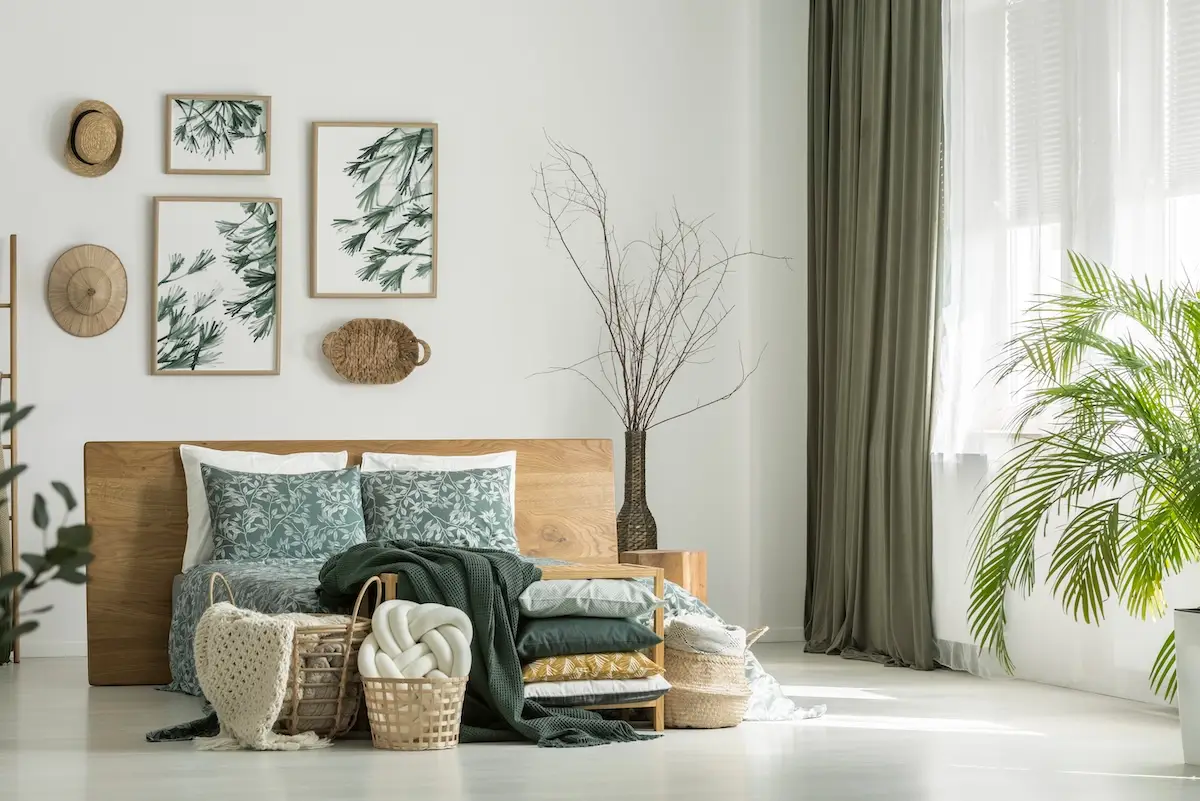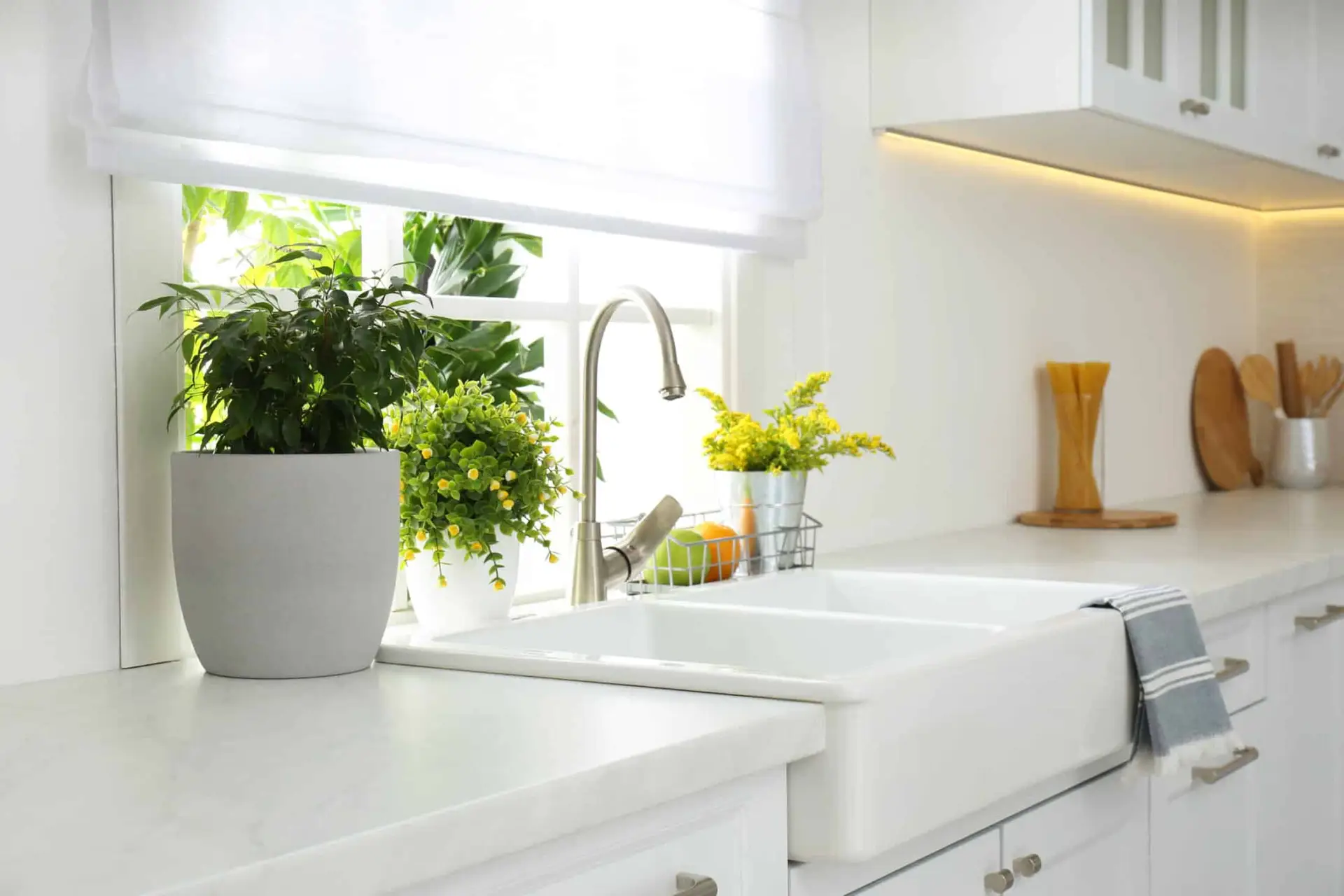Biophilia, a term coined by American biologist Edward Wilson, sparked the biophilic design movement. This was a response to humanity’s desire to reconnect with nature in an industrialized world. Incorporating biophilic design into spacious areas like your living room can envelop you in serene comfort. Begin your wellness journey by embracing biophilic design in your living room.
Core Principles of Biophilic Design
Biophilic design crafts a nature-infused sanctuary to promote health and productivity. Rekindling your connection with nature starts by incorporating natural and organic materials.
In addition, fresh air and abundant natural light are equally important. Americans spend 90% of their time inside, where pollutant levels can be two to five times greater than outdoor air. This is why integrating non-visual elements like ambient sounds, invigorating scents, and air purifiers is a must. These design choices can help you feel deeply rooted in nature.
Implementing Biophilic Design in Your Living Room
The living room is a perfect place to experiment with biophilic aesthetics. You can take advantage of the natural light and flexible layout options to reconnect with nature in your home.
Natural Light
Natural light synchronizes with your circadian rhythm to uplift mood and enhance sleep quality. Infusing your living space with biophilic charm starts by inviting as much natural light as possible. First, consider installing floor-to-ceiling windows, sliding glass doors, and skylights. Keep window treatments minimal to flood your space with light. Likewise, skylights can illuminate dim corners while providing sustainable heating during winter.
If natural light is limited, irregular mirrors can help reflect and amplify what light is available. Look for mirrors that mimic organic shapes found in nature, such as annual tree rings, pond shorelines, and smooth pebbles. These shapes pair well with curvilinear furniture and complement biophilic aesthetics, making any small living space feel airy and expansive.
Indoor Plants
Indoor plants are a cornerstone of biophilic living rooms, offering bold textures and air-purifying benefits. Before you choose, consider the safety of children, pets, or houseguests. While beautiful and low maintenance, daffodils, sago palms, snake plants, and certain lilies can be toxic if ingested. Therefore, if you choose these plants, put them in safe places like tall bookshelves or cabinets.
For new plant parents, ZZ plants, snake plants, peace lilies, and spider plants are great for incorporating biophilic design into your living room. These plants thrive in indirect sunlight, need minimal water, and acclimate to average indoor conditions while eliminating toxic pollutants in the air. For statement plants, consider iconic fiddle leaf figs, monstera deliciosa, or daffodils.
When decorating your living room, you can transform dusty corners into green corners with ornate plants. Consider hanging ivies from shelves, window sills, or ledges to create an intertwining burst of nature. You can find unique planters built into coffee tables or stick to traditional pottery with terracotta. Alternatively, experimenting with glistening rose quartz and amethyst geode planters can complement organic materials.
Natural Materials
Biophilic design thrives on organic materials like hardwood, stone, bamboo, and rattan. These materials echo the seamless indoor-outdoor integration characteristic of Palm Springs, the whimsical aura of bohemian chic, and the simple elegance found in Scandinavian interiors. Nature offers an endless reservoir of design elements, so keep these options in mind when designing your space.
When incorporating wood, bamboo, and rattan, find shelving, tables, decorative trays, lampshades, and chairs that reflect your desired aesthetic. Picture a coffee table made of reclaimed wood or rattan egg chairs near driftwood shelves. Stone, with its sturdy and timeless appeal, is ideal for countertops, accent walls, and fireplace mantels. Like terracotta tiles, each stone block has a unique pattern, ensuring no interior is the same.
Natural Patterns and Textures
Natural patterns and textures pair seamlessly with organic materials. When selecting prints, imagine motifs of dancing leaves, cascading water ripples, intertwining vines, or sparkling geodes, all beautifully offset by hardwood floors and natural light. These textiles enhance the softness of curved furniture and asymmetrical shelving to create an enchanting atmosphere.
Textured surfaces like plastered walls, exposed brick, terracotta tiles, or wooden panels can revitalize bland walls or serve as backdrops for botanical wallpaper and prints. Cultivate a stunning biophilic living space by accentuating it with sculptures, framed photos, and wall art. Enhance visual interest with textured upholstery, rugs, and light fixtures.
Nature-Inspired Color Palettes
Nature-inspired palettes rejuvenate and add vibrant touches to your biophilic living room. First, start with neutral bases like white, gray, or brown to complement nature’s prominent hues. Draw inspiration from colors that resonate with you and elevate your desired atmosphere. Opt for sunkissed oranges and yellows for energetic living rooms and calming shades like sage and lavender for more serene spaces.
Ensure your primary and secondary accent colors harmonize with one another. Olive green with a hickory wood base could pair well with plums or pale pinks reminiscent of sunset, while navy blue and rich mahogany can add a sophisticated twist to rich ocean hues. Carefully selecting innate palettes can help create a biophilic living room that revitalizes your spirit.
Are you ready to rekindle your connection with nature with a brand-new living space? Contact us today to get started!




